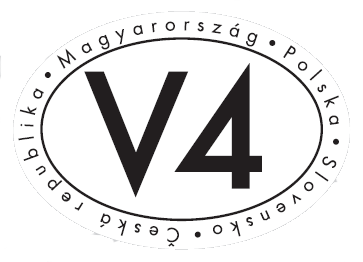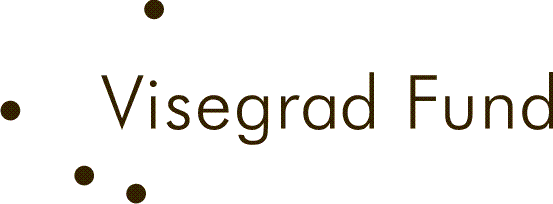Project Publications
| Book 1 | Book 2 | Book 3 | Book 4 | Book 5 | Book 6 | conference articles in journals |
Wach, K. (2014). The Theoretical Modellinf of the Firm-Level International Competitiveness in Business Studies (chapter 5) In: D. Kiendl-Wendner & K. Wach K. (Eds.), International Competitiveness in Visegrad Countries: Macrto and Micro Perspective. Graz: Fachhochschule Joanneym (ISBN: 978-3-200-03673-4).
Full text: pdf (free download)
Abstract
Competition, rivalry, competitiveness are manifested both when a firm operates on the domestic market and on the international market, but international competitiveness can also manifest itself in relation to domestic businesses which are forced to compete on the local market with foreign competitors or even with global players. It is determined by the degree of internationalisation of the industry in which a given firm functions, among others, but most of all by the scope, that is the territorial extent of the firm internationalisation. The aim of the paper is a specific diagnosis of the modelling of the firm-level international competitiveness available in the literature, integrating the output of economics and management studies. In order to achieve the assumed goal, literature study as well as the criticism of literature on the analysed research strand was used. Initially, competition and competitiveness were analysed from the perspective of economics, however, recent decades have brought extreme intensification of the research into competitiveness of a firm, conducted mainly from the perspective of management studies. In firm-level competitiveness modelling, the process paradigm of building competitiveness is most frequently adapted, which consists of a four-element sequence: competitive potential, competitive advantage and its sources, competitive strategies and actions, and competitive position. International competitiveness of a firm concerns not only internationalised businesses, but also local firms whose the competitors are foreign entities. In the literature of the subject there is a whole spectrum of various models which try to explain the issue of international competitiveness of a firm, but the classical ones base more on organisational and managerial factors, and the latest ones on the dynamic entrepreneurial competences and organisational learning.
Keywords: international competitiveness, corporate growth, internationalisation
JEL classification: D21, F23, L21, L26, M16
References
Aaker, A. (1989). Managing Assets and Skills. The Key to a
Sustainable Competitive
Advantage. California Management Review, 31(2).
Aldreson, W. (1937). A Marketing View of Competition, The Journal of Marketing, 1(3).
Bartha, Z. & Gubik, A.S. (2014). Specifics of International Business
Competitiveness
in Visegrad Countries – Qualitative Analysis of Selected Case Studies
(chapter 7).
In: Duréndez, A. & Wach, K. (eds.), Patterns of Business
Internationalisation in Visegrad
Countries – In Search for Regional Specifics. Cartagena: Universidad
Politécnica
de Cartagena.
Bednarz, J. (2013). Konkurencyjność polskich przedsiębiorstw na
rynkach europejskich na
przykładzie wybranych branż, Gdańsk: Wydawnictwo Uniwersytetu Gdańskiego
.
Bossak, J.W. & Bieńkowski W. (2004). Międzynarodowa zdolność
konkurencyjna kraju
i przedsiębiorstw. Wyzwania dla Polski na progu XXI wieku, Warszawa:
Oficyna
Wydawnicza Szkoły Głównej Handlowej .
Buckley, P.J., Pass, C.L. & Prescott, K. (1988). Measures of
International Competitiveness:
A Critical Survey. Journal of Marketing Management, 4(2), pp. 175–200.
Cournot, A.A. (1897). Researches into the Mathematical Principles of
the Theory of Wealth,
New York NY: A.M. Kelley.
D’Aveni, R.A. & Gunther, R. (1995). Hipercompetitive Rivalries:
Competing in Highly
Dynamic Environments, New York, NY: Free Press.
Daszkiewicz, N. (2008). Konkurencyjność małych i średnich
przedsiębiorstw w procesie
internacjonalizacji (chapter 6) In: Daszkiewicz, N. (ed.),
Konkurencyjność. Poziom
makro, mezo i mikro, Warszawa: PWN.
Daszkiewicz, N. & Wach, K. (2012). Internationalization of SMEs:
Context, Models and
Implementation, Gdańsk: Gdańsk University of Technology Publishers.
Daszkiewicz, N. & Wach, K. (2013). Małe i średnie przedsiębiorstwa na
rynkach
międzynarodowych. Kraków: Wydawnictwo Uniwersytetu Ekonomicznego w
Krakowie.
Day, G.S. (1997). Marinating the Competitive Edge: Creating and
Sustaining Advantages in
Dynamic Competitive Environments. In: G.S. Day, D.J. Reibstein & R.E.
Gunther
(eds),Wharton on Dynamic Competitive Strategy, New York, NY: John Wiley
& Sons Inc.
Dzikowska, M. & Gorynia, M. (2012). Teoretyczne aspekty
konkurencyjności
przedsiębiorstwa – w kierunku koncepcji eklektycznej?, Gospodarka
Narodowa,
vd. LXXX/XXI, no. 4(248).
Flak, O. & Głód, G. (2009). Konkurencyjność przedsiębiorstwa.
Pojęcia, definicje, modele,
Katowice: Wydawnictwo Akademii Ekonomicznej w Katowicach.
Cho, D.-S. & Moon, H.-Ch. (eds). (2002). From Adam Smith to Michael
Porter: Evolution of
Competitiveness Theory. London: World Scientific Publishing.
Gatignon, H. & Reibstein, D.J. (1997). Creative Strategies for
Responding to Competitive
Actions. In: G.S. Day and D.J. Reibstein (eds.), Wharton on Dynamic
Competitive
Strategy, New York, NY: John Wiley and Sons.
Głód, G. (2010). Konkurencyjność i budowanie przewagi konkurencyjnej
przedsiębiorstwa
(chapter 3), In: T. Kraśnicka (ed.), Przywództwo a konkurencyjność
organizacji
przedsiębiorczych, Katowice: Wydawnictwo Akademii Ekonomicznej w
Katowicach.
Godziszewski, B. (1999). Potencjał konkurencyjności przedsiębiorstwa
jako źródło przewag
konkurencyjnych i podstawa stosowanych instrumentów konkurowania
In: M.J. Stankiewicz (ed.), Budowanie potencjału konkurencyjności
przedsiębiorstwa,
Toruń: TNOiK.
Gogel, R. & Larreche, J.-C. (1989). The Battlefield for 1992: Product
Strength and
Geographic Coverage. European Management Journal, 7(2), pp. 132-140.
Gogel, R. & Larreche, J.-C. (1991). Pan-European Marketing: Combining
Product Strength
and Geographical Coverage. In: S.G. Makridakis, San Francisco (eds),
Single Market
Europe: Opportunities and Challenges for Business. CA: Jossey-Basspp,
pp. 99-118.
Gorynia, M. (2000). Luka konkurencyjna w przedsiębiorstwach a
przystąpienie do Unii
Europejskiej. Gospodarka Narodowa, 10.
Gorynia, M. (2002). Konkurencyjność przedsiębiorstwa – próba modelu
(sub-chapter 1.5)
In: M. Gorynia (ed.), Luka konkurencyjna na poziomie przedsiębiorstwa a
przystąpienie
Polski do Unii Europejskiej, Implikacje dla strategii firm i polityki
gospodarczej. Poznań:
Wydawnictwo AE w Poznaniu.
Gorynia, M. (2002). Pojęcie konkurencyjności – istota i poziomy In:
M. Gorynia (ed), Luka
konkurencyjna na poziomie przedsiębiorstwa a przystąpienie Polski do
Unii Europejskiej.
Poznań: Wydawnictwo Akademii Ekonomicznej w Poznaniu.
Gorynia, M. (2009). Konkurencyjność w ujęciu mikroekonomicznym
(chapter 3)
In: M. Gorynia, E. Łaźniewska,Kompendium wiedzy o konkurencyjności
(eds). Warszawa:
PWN .
Gorynia, M. & Jankowska B. (2008). Klastry a międzynarodowa
konkurencyjność
i internacjonalizacja przedsiębiorstwa. Warszawa: Difin.
Gorynia, M., Jankowska B. & Tarka P. (2013). Basic concepts of
company competitiveness
(chapter 1) In: M. Gorynia, B. Jankowska (eds), The Influence of
Poland’s Accession to the
Euro Zone on the International Competitiveness and Internationalisation
of Polish
Companies. Warsaw: Difin
Grant, R.M. (2005). Contemporary Strategy Analysis, Chichester: John
Whiley & Sons.
Haffer, M. (1999). Instrumenty konkurowania In: M.J. Stankiewicz (ed.),
Budowanie
potencjału konkurencyjności przedsiębiorstwa. Toruń: TNOiK.
Haffer, M. (2006). Ogólna charakterystyka współczesnej konkurencji
międzynarodowej
(chapter 1) In: M.J. Stankiewicz (ed.), Zarządzanie wiedzą jako kluczowy
czynnik
międzynarodowej konkurencyjności przedsiębiorstwa. Toruń: TNOiK, pp.
47-53.
Kirzner, I. (1973). Competition and Entrepreneurship. Chicago:
University of Chicago.
Ma, H. (2000). Competitive Advantage and Firm Performance.
Competitiveness Review,
10(2), pp. 15-32.
Ma, M. & Liao M. (2006). A Firm-Level Study on the International
Competitiveness:
Theoretical Analysis and Empirical Findings. International Journal of
Innovation and
Technology Management, 3(1), pp. 22-23.
McCarty, W. (2014). Modeling: A Study in Words and Meanings (chapter
19). In:
S. Schreibman, R. Siemens, J. Unsworth (eds), A Companion to Digital
Humanities.
Oxford: Blackwell.
Man, T.W.Y., Lau, Th. & Chan, K.F. (2002). The competitiveness of
small and medium
enterprises: A conceptualization with focus on entrepreneurial
competencies. Journal of
Business Venturing, 17, pp. 123–142.
Maślak, E. (2002). Koncepcje konkurencji w naukach ekonomicznych In:
M. Gorynia (ed.),
Luka konkurencyjna na poziomie przedsiębiorstwa a przystąpienie Polski
do Unii
Europejskiej. Poznań: Wyd. AE w Poznaniu.
Nizard, G. (1998). Metamorfozy przedsiębiorstwa. Zarządzanie w
zmiennym otoczeniu
organizacji (Les métamorphoses de l'entreprise. Pour une écologie du
management,
Paris: Economica). Warszawa: PWN.
Noga, A. (2009). Teorie przedsiębiorstw. Warszawa: PWE.
Obłój, K. (2007). Strategia organizacji. Warszawa: PWE.
Pierścionek, Z. (2003). Strategie konkurencji i rozwoju przedsiębiorstwa, Warszawa: PWN.
Porter, M.E. (1980). Competitive Strategy: Techniques for Analyzing Industries and Companies, New York, NY: Free Press.
Porter, M.E. (1985). Competitive Advantage: Creating and Sustaining
Superior Performance,
New York, NY: Free Press.
Redmond, W. (2013). Three Modes of Competition in the Marketplace.
The American
Journal of Economics and Sociology, 72(2).
Rosińska-Bukowska, M. (2012). Rozwój globalnych sieci biznesowych
jako strategia
konkurencyjna korporacji transnarodowych. Przykład sektora
motoryzacyjnego. Łódź: Wyd.
Uniwersytetu Łódzkiego.
Smith, A. (1812). An Inquiry into the Nature and Causes of the Wealth
of Nations. London:
Ward, Lock & Co.
Solberg, C.A. (1997). A Framework for Analysis of Strategy
Development in Globalizing
Markets. Journal of International Marketing, 5(1).
Stankiewicz, M.J. (2005). Konkurencyjność przedsiębiorstwa. Budowanie
konkurencyjności
przedsiębiorstwa w warunkach globalizacji. Toruń: TNOiK.
Strategor (1999). Zarządzanie firmą. Strategie, struktury, decyzje, tożsamość, transl. K. Bolesta-Kukułka (Politique générale de l'entreprise, Paris: Dunod). Warszawa: PWE.
Światowiec-Szczepańska, J. (2011). Strategiczne narzędzia
konkurowania (chapter 9).
In: Podstawy wyborów strategicznych w przedsiębiorstwach. Warszawa: PWE.
Trąpczyński, P. & Wrona, Th. (2013). From going international to
being
international - strategies for international competitiveness. Poznan
University of
Economics Review, 13(1).
Wach, K. (2008). Skutki akcesji do Unii Europejskiej dla polskich
przedsiębiorstw. Kraków:
Wydawnictwo Uniwersytetu Ekonomicznego w Krakowie.
Wach, K. (2012). Europeizacja małych i średnich przedsiębiorstw:
rozwój przez
umiędzynarodowienie. Warszawa: PWN.
Wach, K. (2014). Europeanisation of Firms as Their International
Growth within
the European Union: The Empirical Investigation into the
Internationalisation Level
among Polish Firms (chapter 1) In: B. Knežević & K. Wach (eds),
International Business
from the Central European Perspective. Zagreb: University of Zagreb, pp.
3-14
Wach, K. (2014). Internationalisation and Globalisation as the Wider
Context
of Europeanisation Processes from the Macro- and Microeconomic
Perspective.
Horyzonty Polityki, 5(10).
Wickham, Ph.A. (2006). Strategic Entrepreneurship. Harlow: Prentice Hall.
Zagórski, J. (1947). Ogólna teoria konkurencji. Warszawa-Łódź:
Wydawnictwo Kazimierza
Rutskiego.
Zook, Ch. (2004). Beyond the Core: Expand Your Market without
Abanding Your Roots.
Boston, MA: Harvard Business School Press – Bran & Company.
Czech Republic
Hungary
Poland
Slovakia

Contact:
Dr hab. Krzysztof Wach
Cracow University of Economics
wachk@uek.krakow.pl
www.wach.uek.krakow.pl

